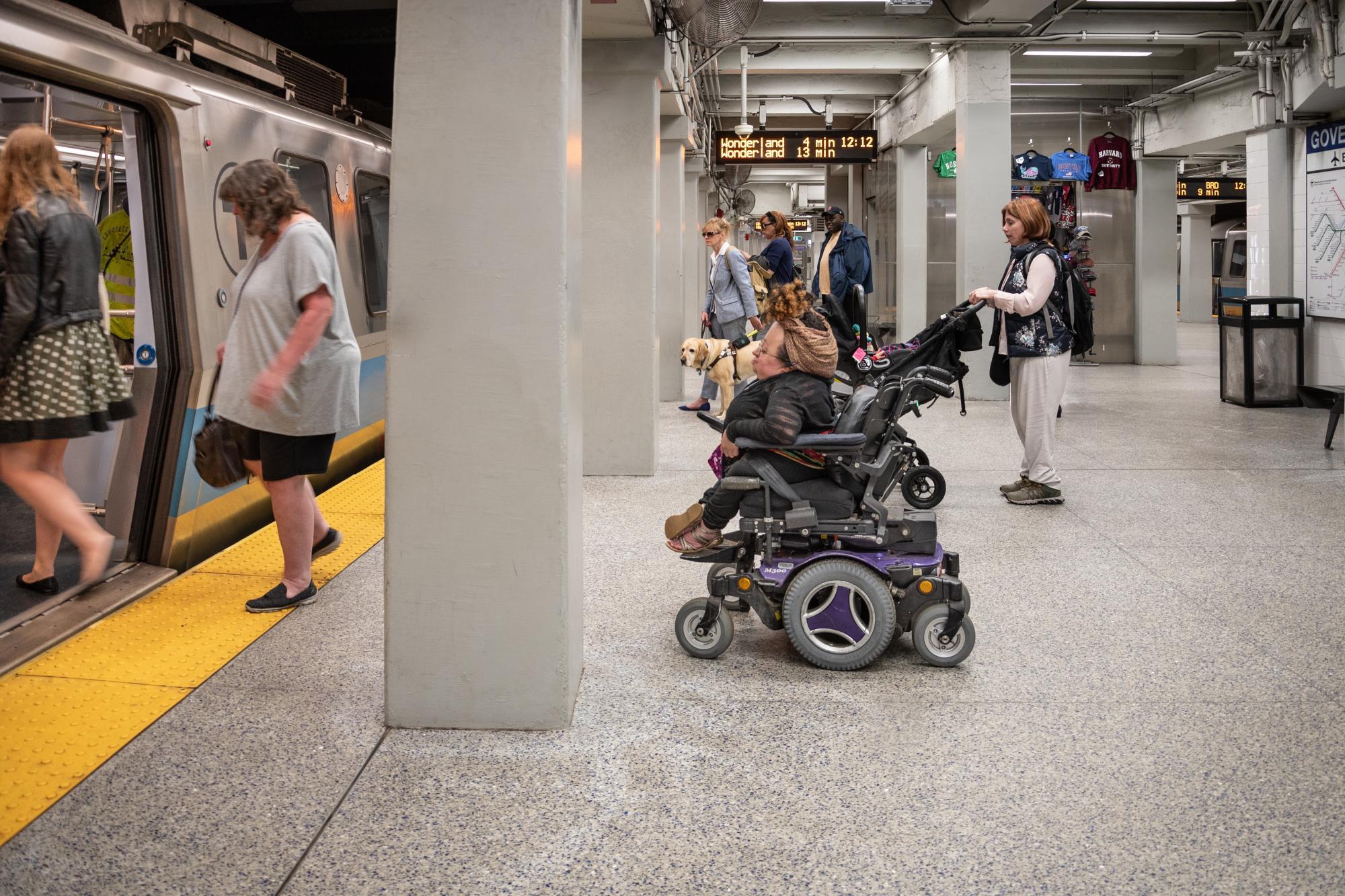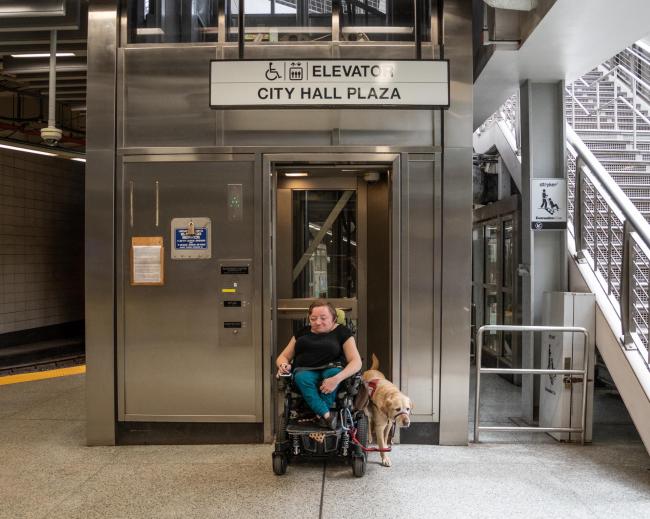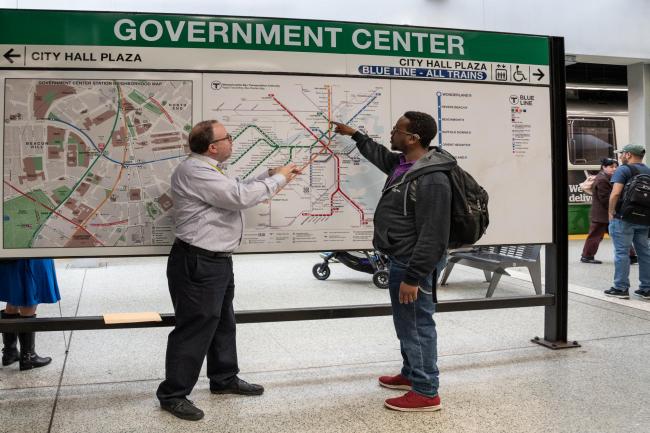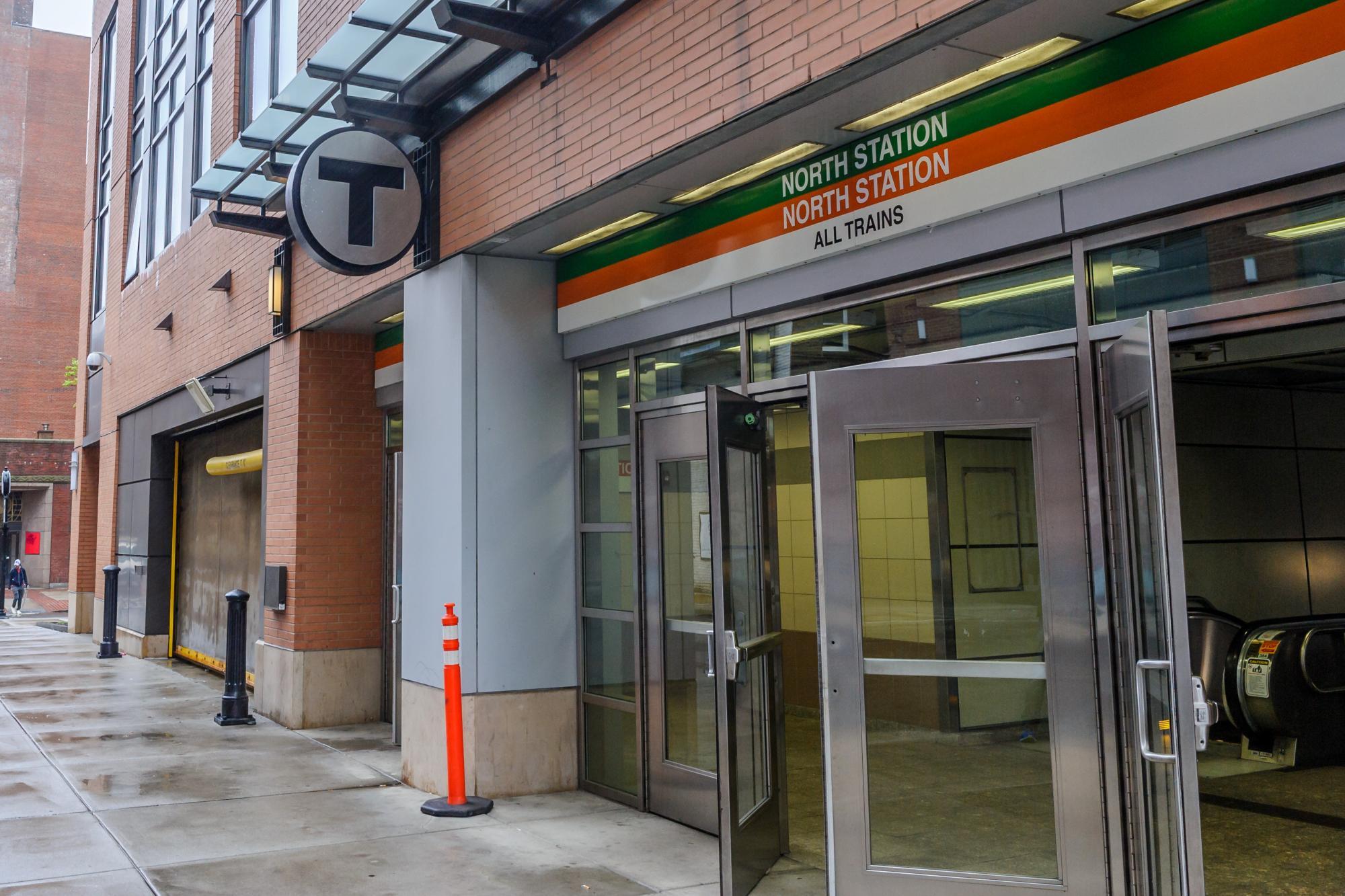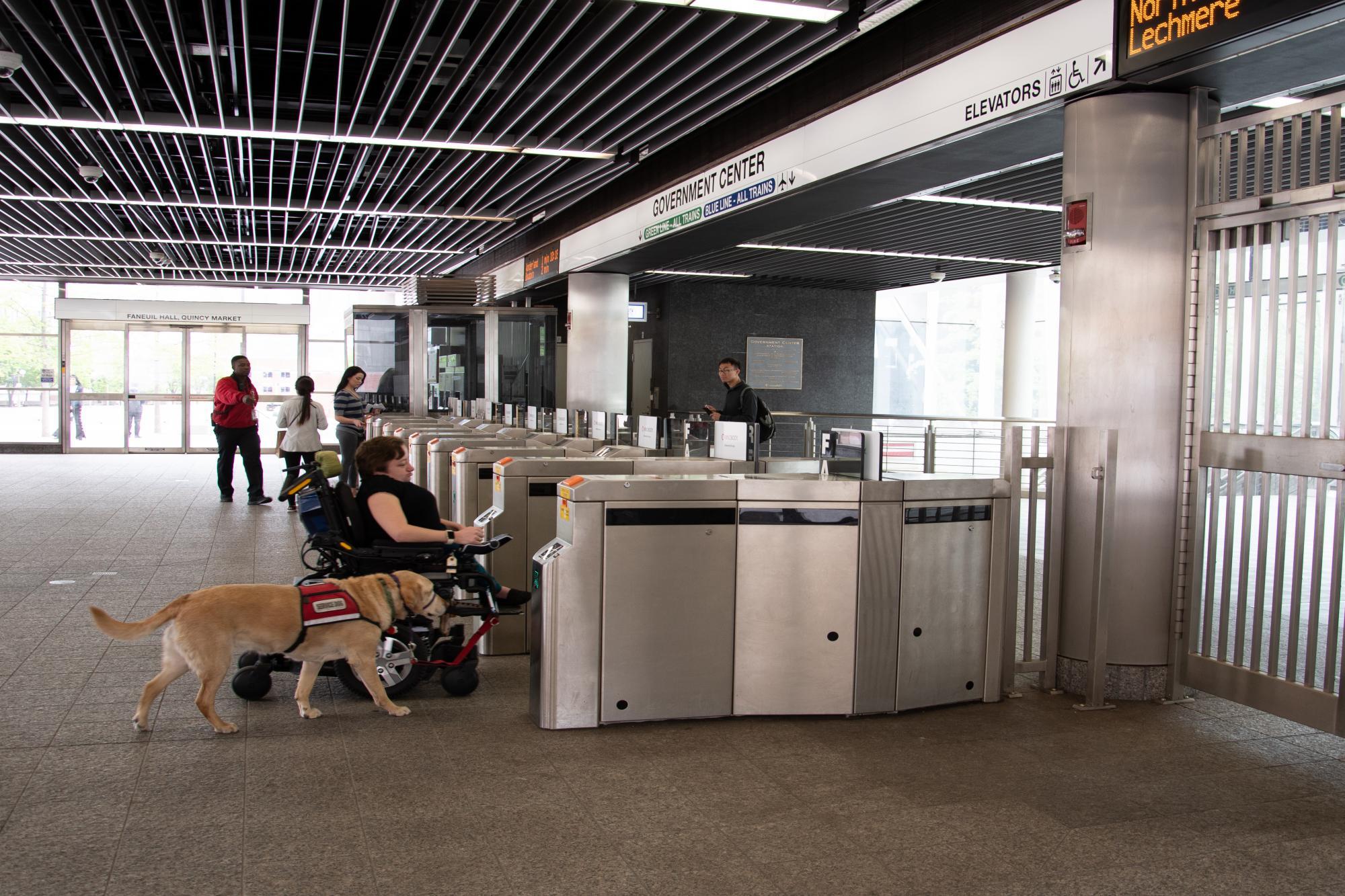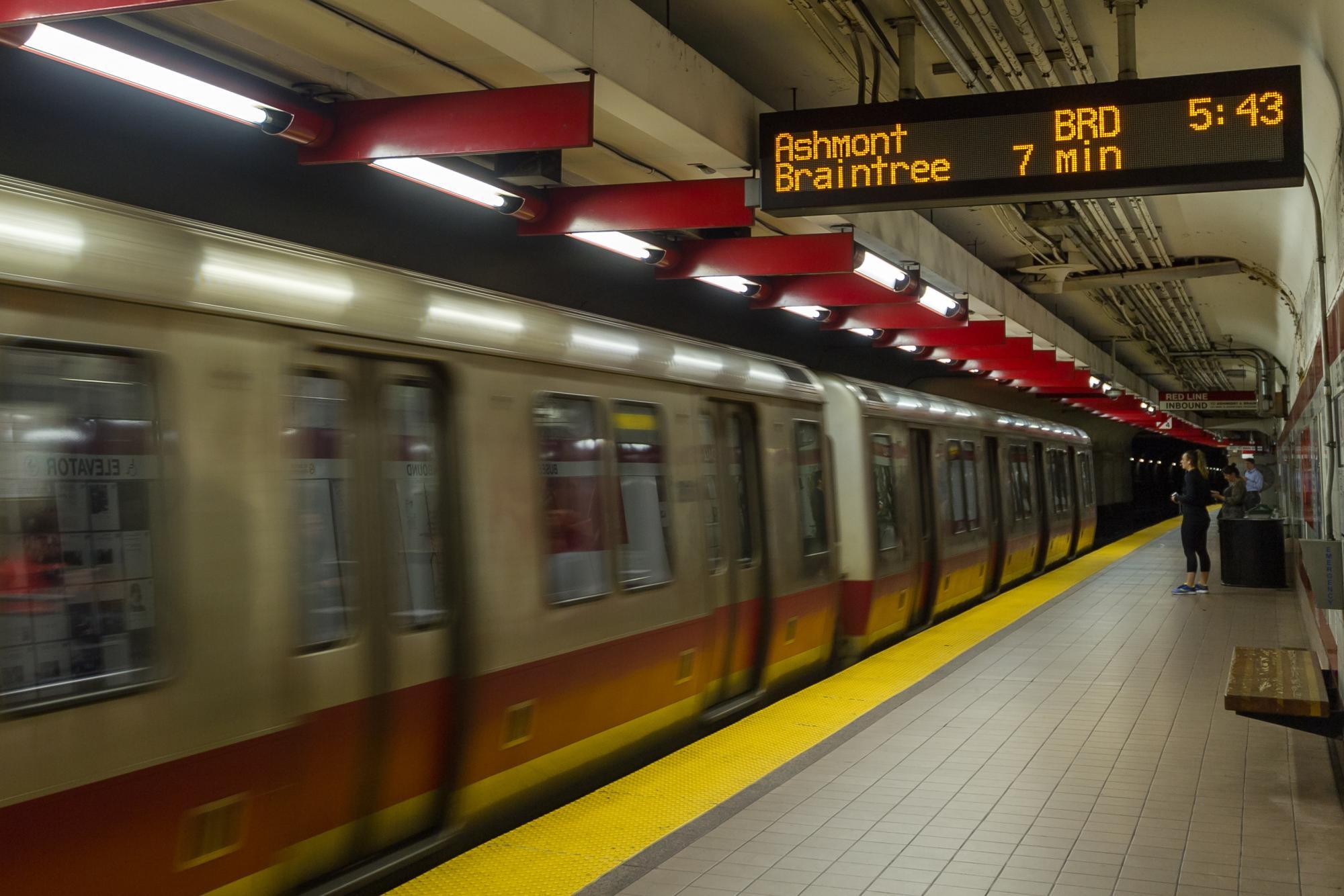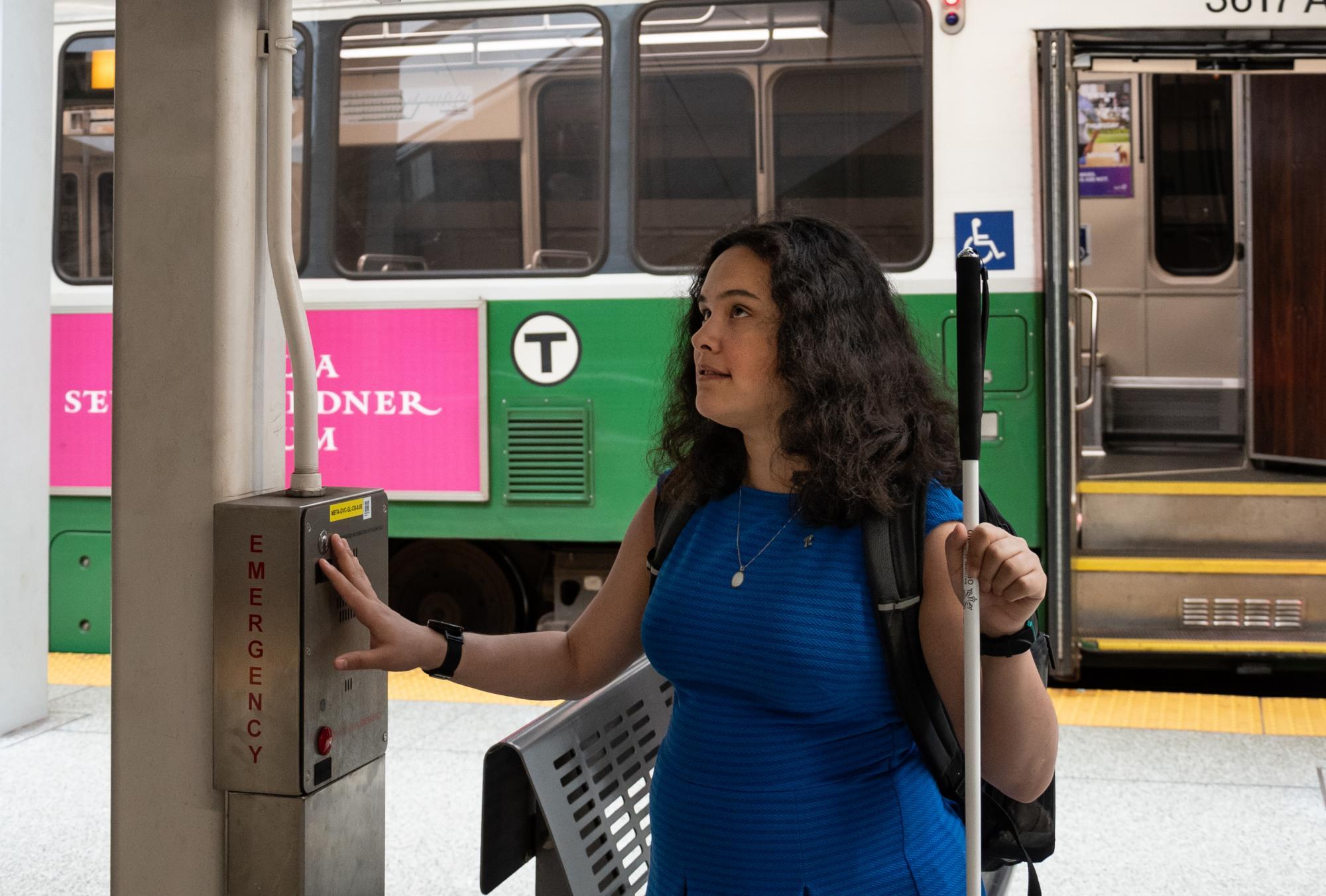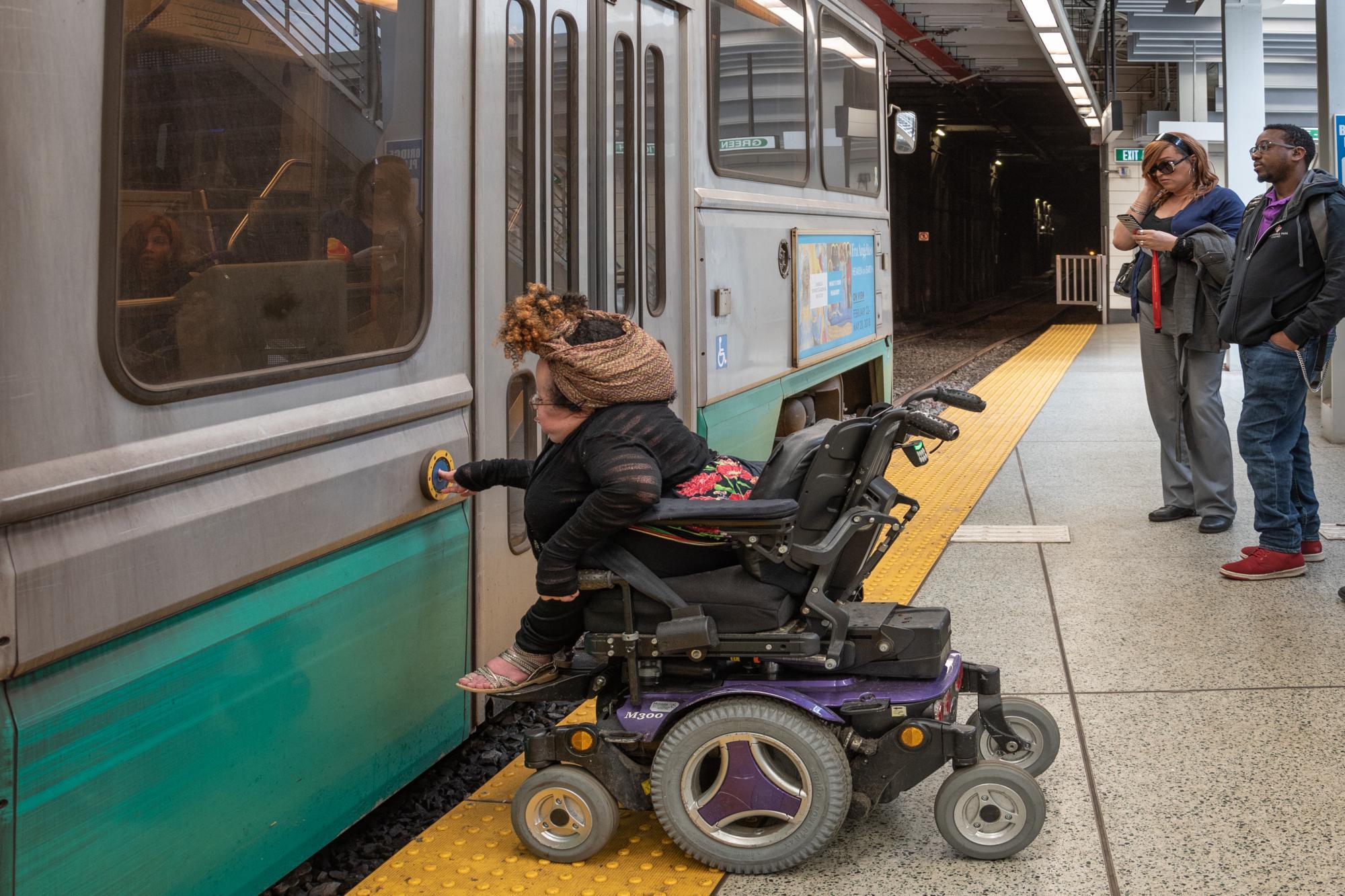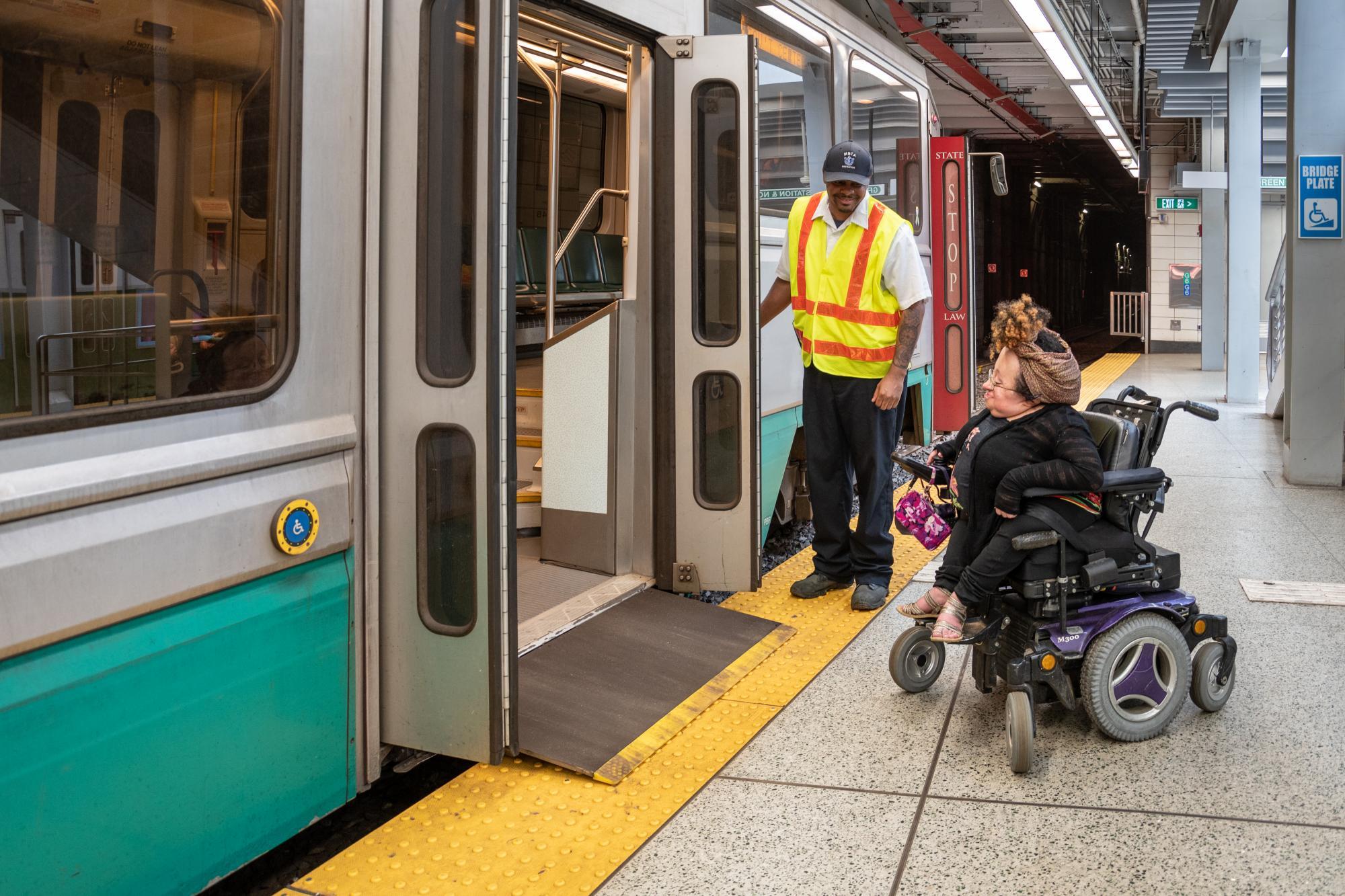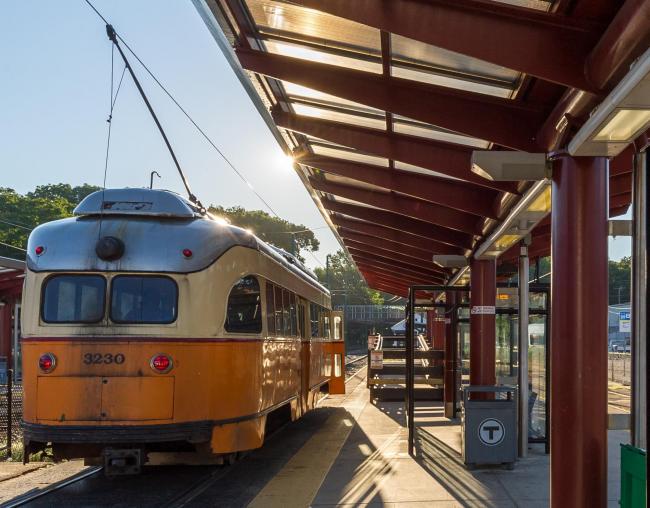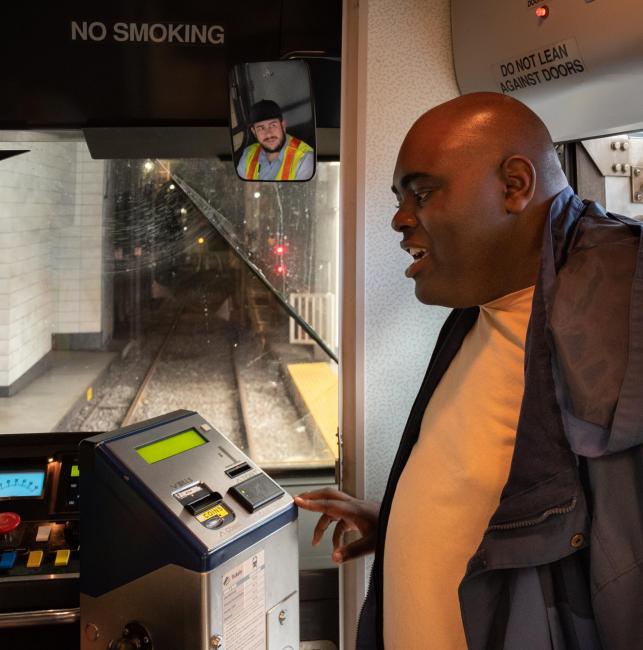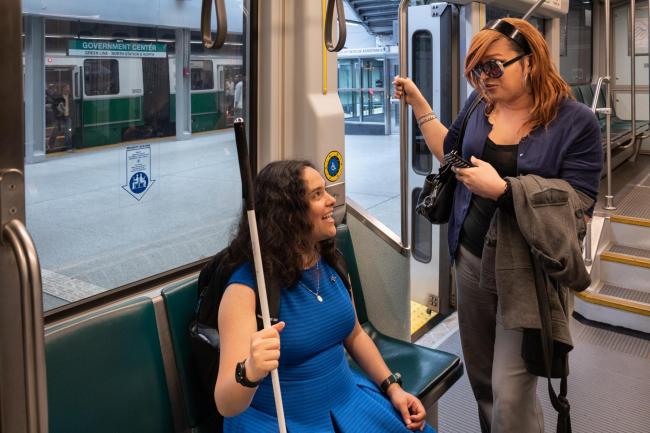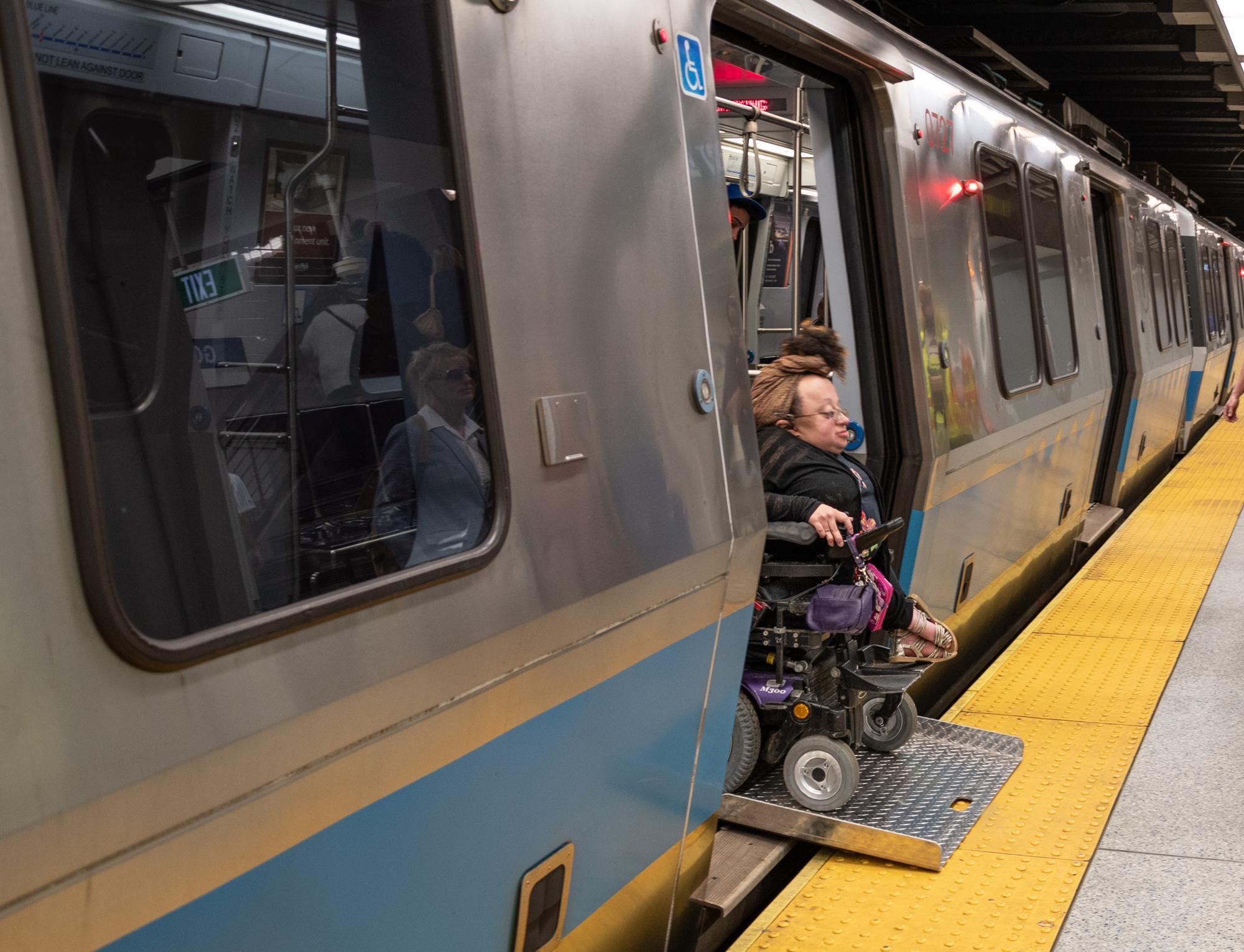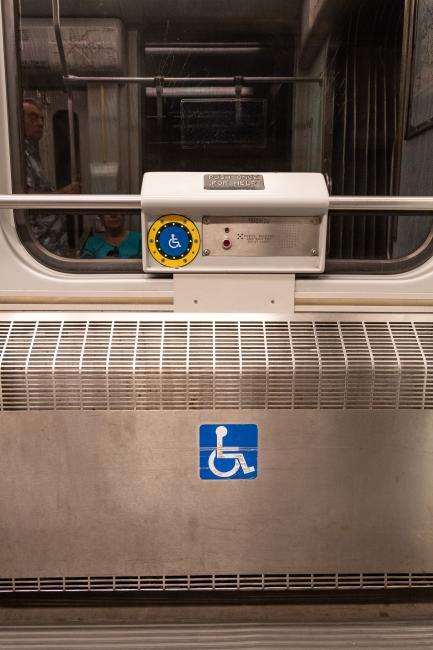Subway Access Guide
The MBTA offers a variety of access features to make your journey on the subway or trolley easier than ever.
Key features include:
- Bridge plates that span the gap between the platform and the train
- Escalators, ramps, and elevators in a growing number of stations
- Wider fare gates
- Tactile warning strips
- Seating areas for customers who use wheeled mobility devices
- Automated audio and visual announcements of train stops, destinations, and arrival times
- Emergency call boxes that you can use for general assistance or in an emergency; download list of call box locations
Planning Your Trip
Most subway and trolley stations are accessible. To ensure an accessible trip on the MBTA, you can use any of the following tools:
- Plan an accessible journey on the T with the MBTA trip planner
- Check for accessibility features at subway stops and stations along your route
- Contact Customer Support to request subway schedules in large print or braille formats
- Try some of our additional accessible trip planning tools
Fares and Passes
People 65 and older and people with disabilities may qualify for reduced subway fares.
Apply through the Charlie Service Center to receive a:
Learn more about reduced fare programs
If you are enrolled in a reduced fare program, you can link your benefits to your form of contactless payment.
What You Can Expect at an MBTA Train Station
Subway stations and stops can be identified by the large “T” logo signs and station name signs that are the same color as the lines that stop there.
At most subway stations, you will need to pass through fare gates to access the train platform. Wider fare gates, which include CharlieCard targets mounted lower for easier access, are marked with the International Symbol of Accessibility (ISA, or “wheelchair symbol”). If you have a reduced fare card or use contactless payment with linked benefits, you can tap it at any fare gate in the station.
While waiting for your train, please stay behind the tactile warning strip. Train arrival times are posted on digital signs on the platforms and announced over the loudspeakers in stations.
If you need assistance, MBTA staff can help. If there are no staff members nearby, push the “Info” button on any station call box to speak with a dispatcher.
Boarding Red, Orange, and Blue Line Trains
Mobile bridge plates that span the gap between the train and the platform are available for customers who need assistance boarding or exiting the train. If you would like to use one, alert an MBTA staff member or use a station call box. You will be accommodated on the next train that arrives.
Boarding Green Line Trolleys
There are two types of Green Line cars—high-floor and low-floor trolleys. Every Green Line train typically includes both types of cars.
On low-floor trolleys, there is one small step into the car at the middle and rear doors. Onboard bridge plates are available for use at these doors.
After the train comes to a complete stop, press the blue and white ISA button on the side of the train to request the use of a bridge plate, or wait at the front door and ask the operator for assistance.
At street-level stops, the operator may only open the front doors. However, you can request to use the middle or rear doors of low-floor trolleys for accessible boarding and exiting. Press the blue and white ISA button or ask the operator for assistance.
On the rare occasion that you may need to board a high-floor trolley, the operator will assist you and deploy a mobile lift.
How to Cross the Green Line Tracks
Boarding Mattapan Trolleys
Most Mattapan Trolley stops have mini-high platforms. Position yourself on the platform before the train arrives, and the operator will deploy a bridge plate to span the gap between the platform and the train.
At Ashmont Station, a staff member must deploy a mobile lift for accessible boarding. Ask the operator for assistance.
Contact Us
Contact MBTA Customer Support with any questions, concerns, or comments about accessibility. Be prepared to provide as many details as possible so we can provide the most helpful response.
Learn more about the accessibility complaint process
Main Hotline: 617-222-3200
Toll Free: 800-392-6100
711 for TTY callers; VRS for ASL callers
Elevator/Escalator Hotline: 617-222-2828
Online
T Access Guides by Mode
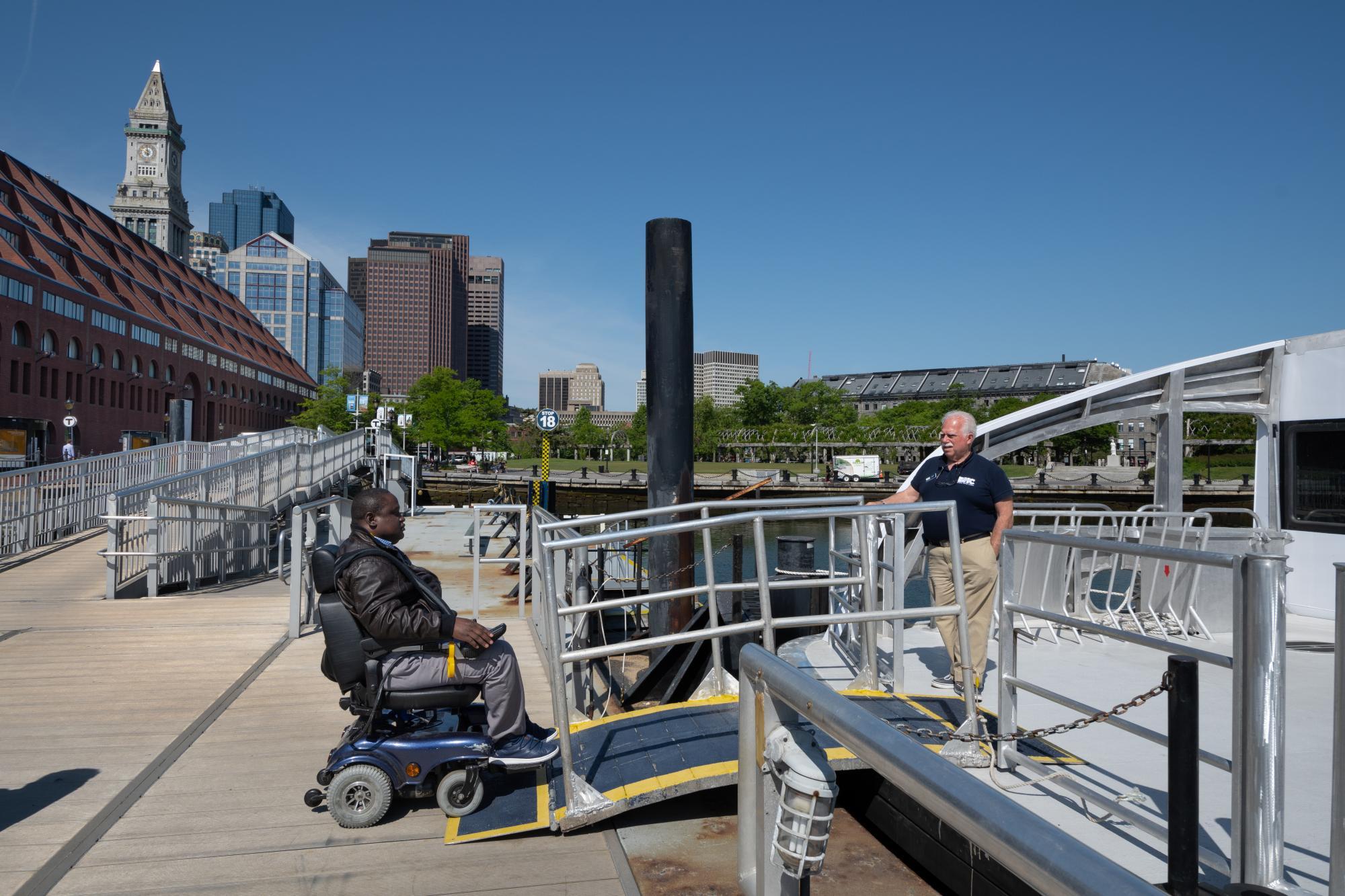
Much of the MBTA is accessible. Learn more about accessibility features on each mode of transit with our access guides.
On Board the Train
The operator may ask you for your destination so there is assistance available when you exit. To request help during your trip, press the emergency call button located at either end of the car to speak with the operator.
Paying Your Fare
At street-level stops without fare gates, the operator can help you pay your fare at the onboard fare box or the contactless payment reader.
Priority Seating
Priority seating is available near the doors of every train. Designated seating areas for customers who use wheeled mobility devices are available on most trains. Customers are expected to yield priority seats to older adults and people with disabilities, but cannot be forced to move.
Stop Announcements
Each station or stop along the route will be announced by an automated system or by the train operator. Upcoming stops may also be displayed on digital signs in each train car.
Exiting Red, Orange, and Blue Line Trains
You do not need to request your stop on a Red, Orange, or Blue Line train.
If you asked to use a bridge plate, an MBTA staff member will meet you at your destination.
Exiting Green Line and Mattapan Trolleys
Street-level stops on the Green Line must be requested by pressing the yellow or gray tape near the windows, or by pulling the gray cable near the ceiling of the train. Stops on the Mattapan Trolley can be requested by pulling the cable near the ceiling.
On the Green Line, you can also tap the blue and white ISA button to request your stop, or to request assistance at your stop. The button is located near the train doors and in the designated area for wheeled mobility devices.
If you asked to use a bridge plate, the operator will assist you at your destination.
Beginner's Guide to the Subway
New to the subway?
Learn about the basics of the system, and where it can take you.
Contact Us
Contact MBTA Customer Support with any questions, concerns, or comments about accessibility. Be prepared to provide as many details as possible so we can provide the most helpful response.
Learn more about the accessibility complaint process
Main Hotline: 617-222-3200
Toll Free: 800-392-6100
711 for TTY callers; VRS for ASL callers
Elevator/Escalator Hotline: 617-222-2828
Online
T Access Guides by Mode

Much of the MBTA is accessible. Learn more about accessibility features on each mode of transit with our access guides.
